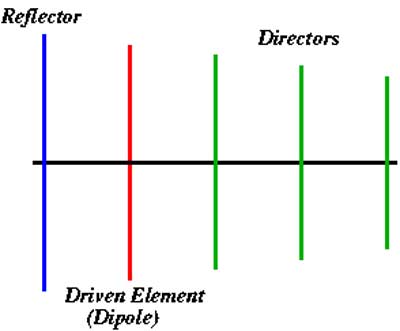Yagi – antenna
The yagi antenna or yagi-Uda antenna is a high frequency antenna which is used to receive TV signals in very high (VHF) frequency range. It is commonly used in communication when a frequency is above 10MHZ. The yagi antenna was invented in Japan in 1926.The yagi antenna is typically operate in the high frequency ( HF) to ultra high frequency (UHF) bands (about 3MHZ TO 3 GHZ) .It is most popular and easy to use type of antenna with better performance, which is famous for its high gain and directivity.
It consists of three elements namely.
- Folded dipole
- Reflector
- Director
Folded dipole
It is the main element of the antenna. The TV signal in the form of electromagnetic wave strikes the antenna voltage and currents are induced in the antenna .Its length is half wave length.
Reflector
Reflector is the element having length more than the dipole. The main function of Reflector in yagi antenna is used to push FM radiation towards the dipole. Its length is 0.55 wavelengths.
Director
Director is the element having length less than dipole. The director is facing towards the TV transmitting (TV tower) antenna .It intercepts the electromagnetic (EM) signals coming form TV tower. Its length is 0.45 wavelengths.
Reflector and director support the folded dipole. Infringe across or for away areas two reflector and number of director are used.


